Has your little darling gnawed the leg off grandma’s antique dresser? Have you come home to find shoes chewed to shreds and blankets or other articles of clothing looking like swiss cheese?
When our pets destroy valuable objects it can be frustrating and create negative emotions that can lead to inappropriate discipline. Destructive chewing is probably the one behavior that every dog owner faces at some point.
Before addressing what to do, it is important to understand that dogs love to chew. Regardless of what it may feel like, it’s not personal; your dog is not chewing to tick you off. It is completely natural for dogs of all ages to interact with the objects in their world by mouthing or chewing on them.
Why Puppies Chew
If your pet is still a puppy, then his chewing is due to teething. Between four and six months is when pups lose their baby teeth and get their adult teeth.
Just like in humans, it can be painful, so your pup will seek relief. Chewing on things feels good and offers momentary relief. Things with corners or made of wood seem to be especially soothing to pups.
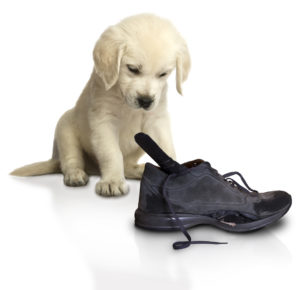
First off, you must accept that you will not stop your pup from chewing; he must chew and cannot control the urge. Remember, it feels really good to the pup whose gums and teeth hurt during the teething period.
Also, never punish your pup for chewing, especially after the fact. He will not understand why you are punishing him; dogs do not relate punishment now with an act done previously. Punishment will only cause confusion and may backfire on you causing your pet to fear you which will impact all training and your future relationship with him.
That said, there are solutions for puppy chewing. The first is to give your pup something appropriate to chew: bones, toys, teething rings, even ice cubes can be used.
At first he won’t know the difference between what can and cannot be chewed. You must be observe your pup at all times and the minute he starts to chew something forbidden, calmly say “no” and take it away, then immediately replace it with something he can chew and praise him lavishly when he does.
You must do this diligently. You are not trying to teach your pup that chewing is bad, but rather that chewing is not allowed on certain objects, but chewing on his toy is a good thing that will bring praise and reward.
You will find that you have to buy a lot of bones and chew toys during these two to four months, but trust that the phase will pass, and when it does your pup will have developed good habits regarding what he can and cannot put his mouth on. Crate or confine Wags when you cannot chaperon, and be sure to leave plenty of chewables for him.
Why Adult Dogs Chew
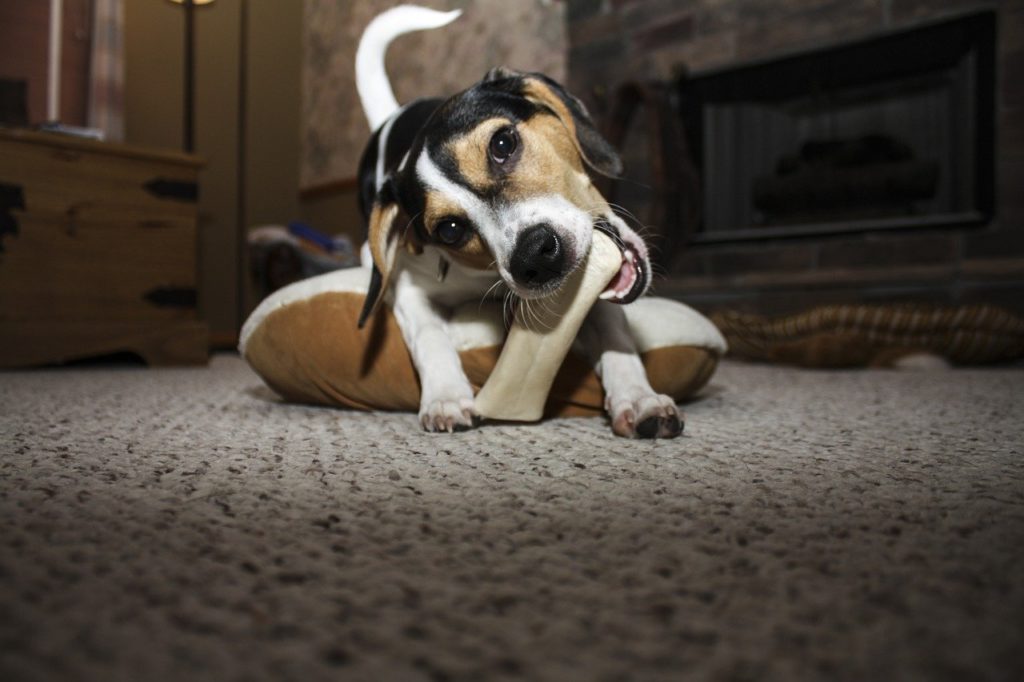
In adult dogs destructive chewing is a symptom of other problems. The most common reason a dog chews is because he is lonely and bored.
Canines are intelligent, social creatures; it is unnatural for a dog to be left alone for long stretches of time. High energy dogs will be even more likely to resort to destructive behaviors, when left alone, so you must provide adequate exercise and stimulus for him.
There are several ways to entertain Wags, but the best solution is to simply give him more attention, more/longer walks, more play time, and more toys.
Sometimes a second pet, or play companion can alleviate the problem. You may need to take your dog to doggy daycare, or arrange for walker to visit during the day to exercise Wags.
This can be an expense, but it will surely be worth it. Destructive chewing is not a behavior that will go away on its own; on the contrary it will likely escalate into a bigger problem.
Problem Chewers
There are instances where a pet owner finds herself with a dog – perhaps a rescued dog or one adopted as an adult – who has already developed a serious chewing habit.
Sometimes Wags simply decides that nothing is as satisfying as the piano leg. If your dog has selected a single object as a favorite chew “toy” there are products to repel the dog.
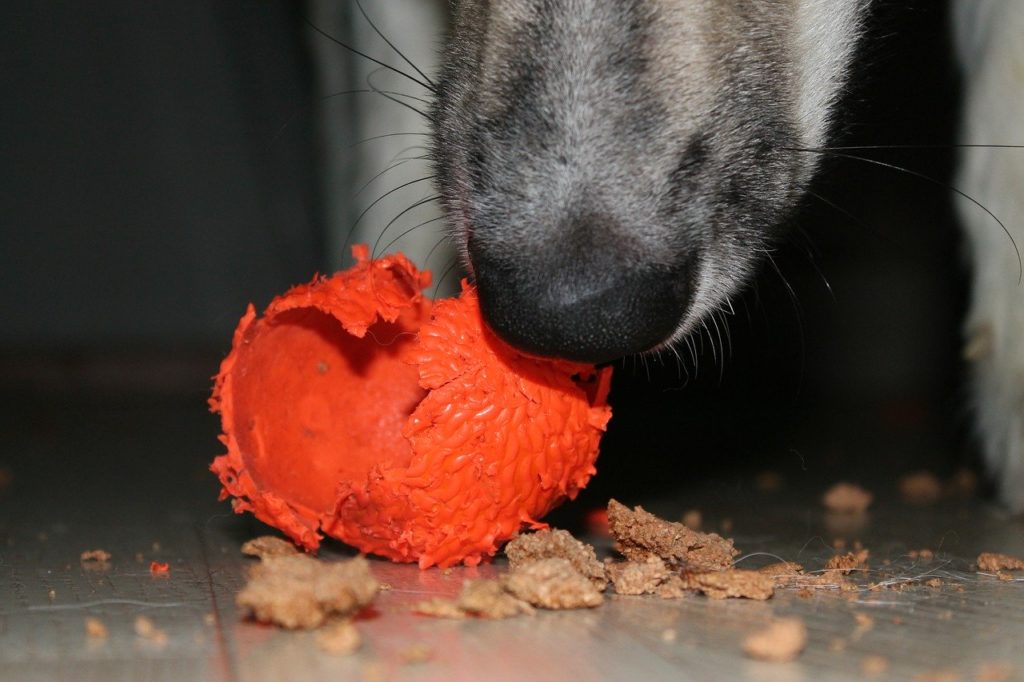
Products such as Bitter Apple or other awful tasting sprays can be applied to the desired object. More commonly though, the dog is chewing anything he can to relieve boredom and excess energy.
The Solution – Training With an E-Collar
If all else fails and no amount of exercise or toys will stop Wags from gnawing on the wrong objects, you may want to try an electronic dog collar (E-collar).
Using an e-collar to prevent your dog from biting and chewing is a great solution. E-collars come with a remote control that creates an electric stimulation. You might think this sounds torturous or cruel, but for chronic problem behaviors they can be the most humane choice. Most e-collars come equipped with variable intensity to insure that you dog not overstimulate or hurt your pet.
Contrary to what you may read online, E-collars are a sure-fire way to solve dog behavior problem safely and humanely. When used responsibly electronic collars can be the most effective method to eliminate behaviors such as destructive chewing, jumping up, running away and other unwanted activities.
How to Use an Electronic Collar to Stop Chewing & Biting
The first rule of using a shock collar for biting and chewing issues is to use only lowest setting to which your dog responds. Most dogs require only minimal stimulation, but pain thresholds are individual, and every dog has his limit.
Another consideration in setting the intensity level is the degree of distraction. You may need to adjust the stimulation if Wags is distracted. You want your dog to respond, but not jump or yelp; the idea is to interrupt or startle Wags, not hurt him.
Once you determine the appropriate level, you will select the continuous function on your e’collar. This function produces stimulations until you disengage the trigger.
For training what you do not want your dog to do, such as chewing on the piano, this is the best method. Outfit Wags in the collar and then allow access to the object he desires to chew.
The instant he begins chewing on it, begin to tap on the trigger. Wags should immediately drop the object or stop chewing, when he does, stop tapping immediately.
Timing is crucial. Wags will likely learn very quickly that to stop the annoying sensation, he needs to stop chewing on the piano. If he doesn’t respond, you may need to increase the stimulation a step.
A Word of Caution
Before choosing to purchase an e-collar assess your dog’s behavior carefully. If you are a first time dog owner or unsure why your dog is exhibiting destructive behaviors, do some research and consult professionals. If you determine that he may be chewing because of separation anxiety, hire a professional dog trainer or behaviorist.
Electronic collars, though safe and effective for use on healthy adult dogs, are not recommended for dogs with psychological problems. E-collars are never a good choice for puppies, tiny dogs, shy, fearful or stressed dogs and should never be used to punish your pet indiscriminately.

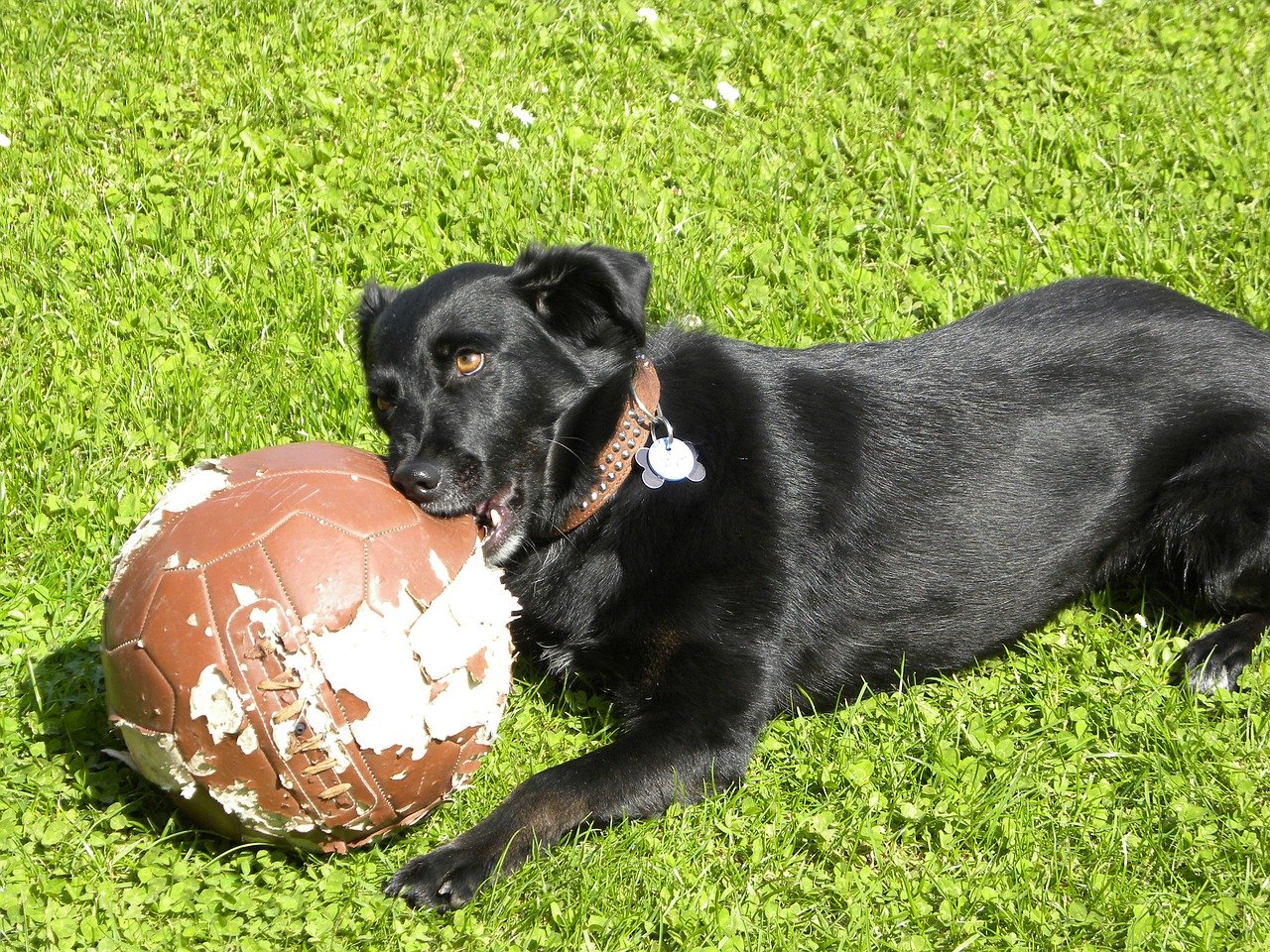

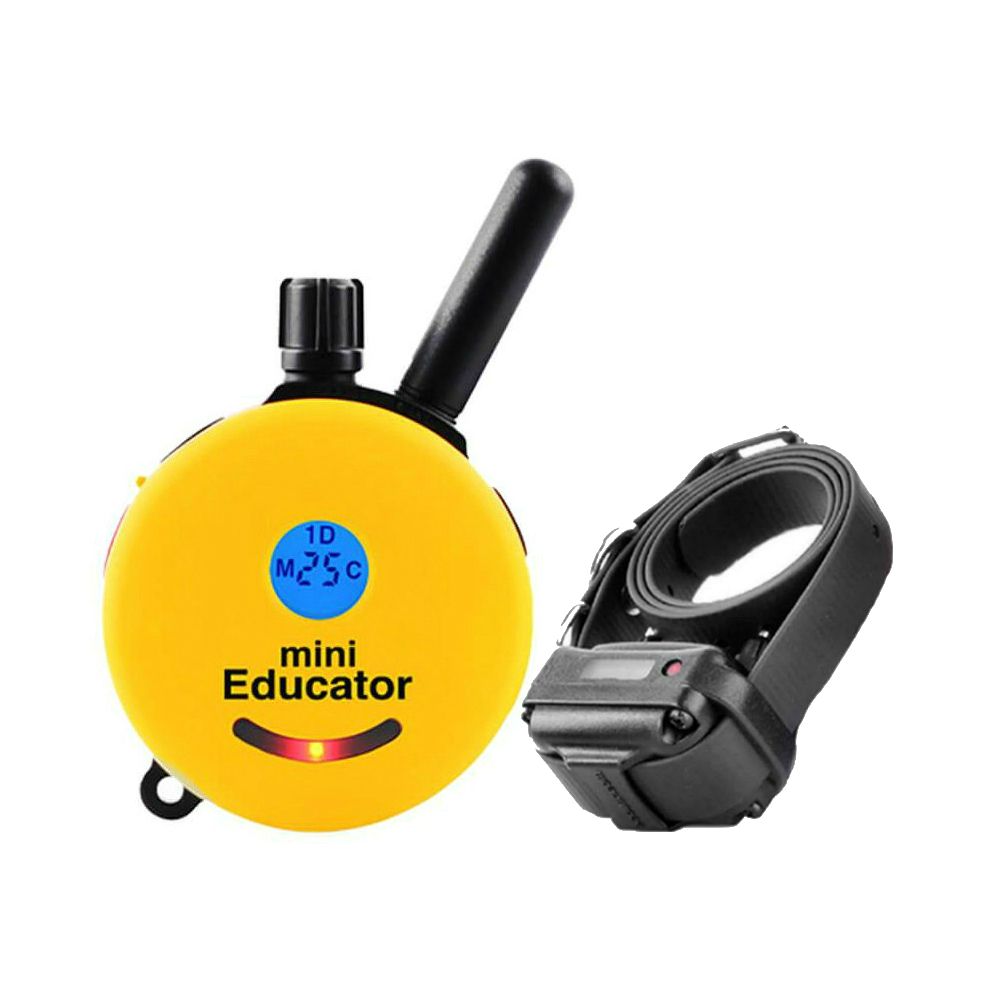
Subscribeto get the latest dog training articles, latest offers & news.
You have Successfully Subscribed!